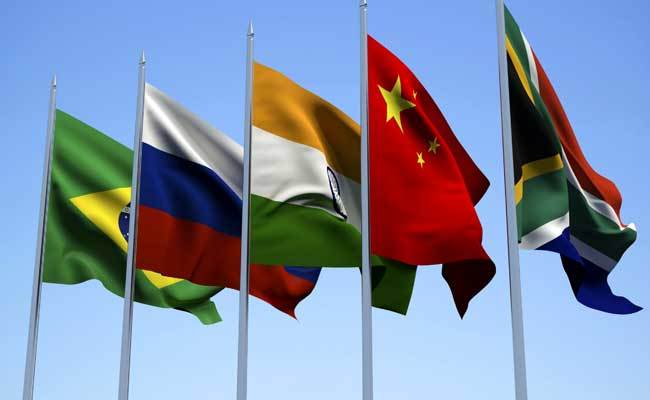The BRICS and the Infrastruttures’Policy / Giorgio Toscani
Giorgio Toscani, engineer, expert in Development Economy, and specialized in territorial management and land use, has collaborated with national and European Institutions. Past President and CEO in several Project Companies in environment and infrastructure sector of Italian Public-Private System (PatecipazioniStatali). Actually collaborate with Eurispes and its international Department.

Premise
According to the Economics, an infrastructure is commonly defined as the network of goods and services representing the fundamental element for the socio-economic development of a country.
Within the scope of the goods, purely economic are considered those basic infrastructures which allow the State to exercise the function of stimulating development; in addition, to such infrastructures we have to link the so called social infrastructures that guarantee the basic services to the citizen, ie those infrastructures that must have a high accessibility, at low-cost conditions, to allow the country to grow; in this framework we find the so called primary services such as transport, energy and telecommunications. For the set of infrastructures in Economics the synonym of social fixed capital is also used
1-BRICS commitments in the infrastructure sector
This brief introduction is useful to define the field of interests and goals of the Agreements signed by the BRICS Countries in occasion of the various summits and meetings. In fact:
- The BRICS Russian Chairmanship 2015/2016 identifies the following objectives:
a) Key-objective: reinforcement and consolidation of the political and economic BRICS position and role in international sphere.
b) To promote the solution of the most pressing economic problems on the basis of consolidated relationships between the five Partners
c) To achieve a progressive reform of the international monetary system
d) Further development in international monetary cooperation
e) New areas of cooperation
f) Promote initiatives of gradual establishment of new institutions and associations
- In the VIIth Summit of July 9th 2015 at UFA (Russia) the BRICS approved the Final Declaration of their work, in which they agree to carry on coordinated efforts to face the emerging challenges, ensuring peace and security, promoting sustainable development, the eradication of the poverty, inequality and youth unemployment.
It is repeated that the role of the NDB will serve as a strong tool to finance infrastructure and investments for sustainable development projects to be put in place at the beginning of 2016, also in collaboration with the Asian Impr.INV.Bank (AIIB).
- ThePriorities and Recommendationsfrom the UFA Summit 2015 are:
1) Promote practical cooperation in infrastructure development.
2) Include the regional areas and infrastructures to the Report.
3) Cooperation in infrastructure development: investing in infrastructures, particularly with integral development projects that ensure not only the basis for concrete economic growth, but also the increase the quality of life of the populations, the protection of the environment, the harmonization of projects with existing regional initiatives.
-In the Memorandum developed by the five Development Banks (NDB - BNDFEA - EIBIND - CHINADB - DESAFR) the area of cooperation is defined with the aim of increasing policies and procedures, within their respective competences, including the areas of infrastructure and sustainable development projects, in areas of mutual interest for the strengthening trade and economic relations.
2-The development of networks in the future of BRICS
Concerning the infrastructural projects, up to now it has been possible to distinguish between marginal projects and non-marginal projects, ie between projects that may have an impact on the structure of production. Regarding the effects of a project on the economic sectors and institutions we can consider as primary those effects concerning the creation of added value and as secondarythose related to the creation of additional added value, depending on the use of the added value of the main project.The primary effects can in turn be considered as directeffects those corresponding to the added value created by the project and divided among families, public administration, financial intermediaries and companies, and indirect those resulting from the purchases of companies and suppliers of goods and services for the project.
The goal of our time is to achieve a close integration between politics and economy as a condition for the creation of a new added value. In this respect, the BRICS should represent a strong model of a supranational union capable of becoming one of the poles of the modern world and representing a role of effective union and dynamics between Europe and the Asia-Pacific region. The state must support the most important infrastructure projects and first those projects that ensure the connections between the BRICS regions, with the aim promoting the best life quality.
In the regions BRICS should pursue economic-productive development by abandoning the concept of "post-industrialization" which can have negative consequences. In fact, post-industrialism involves the destruction of economic bases characterized by classes and branches of productive activities whose collapse of production, resulting in industrial desertification, causes the loss of all related activities of subsidiary and auxiliary services.
The refusal of industrial development is equivalent to rejecting development as such.In the US they are starting to think in terms of reindustrialization also due to the technological drive that pushes investors to favor technological areas. For this reason it can be said that a direct consequence of post-industrialization entails an increase in technological inferiority consequent to the suspension of development. It is necessary to move towards the creation of new highly technological structures with an accurate and balanced government action between industrial projects and infrastructure projects.
It is necessary that the BRICS countries build their future as an independent center of civilization by entering a new phase of integration-iteration with other European centers of culture generating their own impact based on their intrinsic value. A policy of expansion represents the cornerstone and foundation of liberal monetarism aimed at carrying out complex projects. A development policy also involves a qualitative change in global economic management. Mega projects cannot be an occasional choice but a fundamental method of development.The great works have given great prominence to the regions involved and have favored and developed branches of productive, industrial and service activities related to them.
Projects such as the development of atomic energy, the development of civil aeronautics, rail transport, radio-television systems, sports facilities and Olympic games, the construction of highway systems, all sustainable infrastructure projects have ensured a rapid expansion in the connective system. All these projects are of great importance for the development of the country and to improve the quality of life and must aim to break through a qualitatively innovative way of life and towards new industrial and production technologies.
An important step forward in the creation of technologically advanced industrial facilities for the modernization of a country is to set up an integrated infrastructure system. This implies a flexible unity of transport, energy, and telecommunications infrastructure systems, including space and satellites. That is required both to mitigate the obstacles that hinder a free exchange of products between countries, to revive a large-scale industrialization of products, brands, new goods, services, technologies, in relation to current production processes, favoring the transition from a system based on individual companies to a system of integrated industries, as well as from individual projects to integrated infrastructure projects.
Specifically, if construction companies, through interdisciplinary projects, take part with other companies in forming a production base in the area to develop, if a production system induces investments in complex projects; if companies in the energy, telecommunications, engineering will receive production orders from multi-infrastructural units, coming from integrated infrastructures, all this will arouse:
a) a reciprocal communication and a closer relationship between different service activities that currently are separated;
b) a greater synthesis between information and knowledge of all types of social and economic-productive flows that move through these integrated infrastructures;
c) an increase in both the intensity of the flows and an increase in the efficiency of production factors, through integrated infrastructure channels,
d) greater coordination of the participation by a growing number of the infrastructures’ users, by changing requests and decisions relating to them with timely iterations.
All this will imply the start of an integrated and interrelated process of knowledge, technologies, new institutions and human essence, such as to develop the social fixed capital.
3-Cooperation and a new concept of value
The development of this "modus operandi" implies an extension of the concept of value as object of cooperation and interaction between different countries.If there are countries ready to embark on global development, processes and are able to push the world out of the current moment of crisis and stagnation, then a value to be achieve is not only the transformation of a social system but also a rapid increase in ability of the individuals and therefore of the entire community they represent.
This increase in capacity is determined by the acquisition of a proper knowledge about the new principles and effects of natural and social processes, the development of new technologies, the new human skills and competences that BRICS countries will have to achieve in the future.
The Final Declaration approved by the leaders on 4 September 2017 at the IX Summit in Xiamen (China), in addition to reaffirming the satisfaction for the results achieved in strengthening mutual cooperation, and in the development of cooperation between N.D.B. (New Development Bank) and C.R.A. (Contingent Reserve Arrangement), affirms the will to energize a more useful collaboration able to strengthen the development of the BRICS countries through greater communication and coordination for global economic development with the aim to build up a more equitable global economic order.
To this aim, the will to pursue fairness and justice is reaffirmed as a condition to safeguard regional peace and stability to achieve through a practical and constructive economic cooperation.
On the latter option, operational research groups were exercised on the identification of infrastructures and mega scientific projects (Dubne, 15-17 May 2017) in search of significant connectivity to be proposed in the Second Annual Reportof the BBC (BRICS Business Council).
It was hoped a potential intervention in funding by the N.D.B. (New Development Bank) to support economic and infrastructural development; taking this point as one of the 10 priorities of the Program.
1-A complete information on the activities of the 6 working groups was given, including the one on Infrastructures. Therefore the recommendations for the BRICS Governments were defined in the Second Annual Report. Concerning infrastructures, they envisage cooperation for investments in integral development projects able to promote an increase in the quality of life as well as in the protection of the environment as part of an integrated activity promoted with the regional initiatives of the five countries.
2-Particular attention has been given to the A.P.I. (Priority Integration Agenda) especially in Latin America, to PIDA Options in Africa, to the Belt and Road Program and RAZVITZIE in Eurasia.
3-The Infrastructure Working Group (W.G.I.) has identified the most significant projects for the BRICS countries.
3.1-For Brazil, 14 integrated projects were selected, mainly in the transport sector. Inside this set of projects, n.6 projects concern logistic corridors; n.4 projects are related to bi-oceanic and transoceanic rail connections, n ° 2 projects to multinational motorways.
3.2-For Russia, the following projects have been identified: the Moscow-Kazan high-speed railway; the Moscow-Beijing corridor connecting Russia with China and part of Eurasia; the development project of the RAZVITIE corridor.
3.3.-India intends to develop complex infrastructural projects in industrial corridors and smart cities, based on modern technology and high-intensity communications, using funding from the Indian branch of the Development Bank.
N.5 Corridors have been identified that are at different stage of development: 1) Delhi - Mumbai corridor, 2) Bengalore - Mumbai corridor: 3) Chennai - Bangalore corridor: 4) Visak - Bagetnam - Chennai corridor; 5) Amritsar - Kalkata corridor. These projects cross India and offer a potential opportunity for productive investment.
The port system in India is under severe pressure due to the increase in commercial activity and cargo traffic. Therefore, the development of port infrastructures aims to deepen the seabed for building terminals suited to particular types of LNG cargo with the aim of creating a total port capacity of 3200 MMT; in particular to achieve in 2020 the capacity of 2500 MMT of potential traffic.
The development of port traffic makes it possible to expand the range of port services such as barge transport, the maintenance and repair activities and pilotage services, and the creation of new ancillary and subsidiary activities.
India also reaffirms the importance of encouraging the development of infrastructures related to renewable energy production with the aim of making India less dependent on fossil products using clean energy.
4-China reaffirms the importance of developing the Silk Road as an occasion of the 21st century and confirms the importance of links with the land and maritime Silk Road projects.
5-South Africa gives priority to the Regional and Continental priority infrastructure development program in the transport and energy sector. In particular, it expresses priorities in the DIPA project and in the North-South development corridor, in clean energy and in the development of marine economy and marine connectivity and supporting the need for transport of nuclear and wind energy. It supports the development of the port and railway system.
4-The importance of the use of Intersectional and Forecasting Matrices
If we consider the universally recognized need to address the problems of production development, in particular the infrastructural one (in which one production choice instead another involves immediate and mediated chain reactions in various sectors of the economy) by means of the correct prediction of the mentioned reflexes, in this case the construction of inter-sectional and economic forecasting matrices (Leontief) can be useful.
The elaboration of matrices can be developed in a macroeconomic key that defines a structural interdependence scheme within a national or particular economic system. The Leontievian model aims to describe the structure of an economic system by explaining its size and functioning on the basis of interdependent relationships between the various sectors; it is useful analysis tool for setting up development programs.
In particular, the infrastructure sector includes that of building, which, in addition to directly influencing the production, conditions the development of numerous other branches of production activities and services. The correlations between the building sector and the other production sectors are highlighted in the inter-sectoral matrix. It highlights the influence that the construction industry has on the construction materials sector, the wood industry, and ferrous metals; it heavily influences the manufacturing sector, above all chemical and mechanical as well as the electrical, gas and water industries.
As far as services are concerned, in addition to transport and communications, the most involved sectors are those of credit, insurance, and local administration services.
In addition to the sectors most directly involved in production activities, other sectors are involved that can play an important role at local level. This refers in particular to the agriculture, clothing industry, the sector of machine repair.
Ultimately, through the matrix system we can measure the size of the mercantile channels and their propagation time, realize the shape of the system dealing with the location of plants, the routes of traffic and technology, all necessary elements to decide an economic policy compared to another one.
MATRIX
Sectors
A B C
Primary activities x x x
Secondary activities x x
Tertiary activities x
The usefulness of the model must consist in giving us a framework on which to study the consequences of the different hypotheses corresponding to the main alternative development policies.


